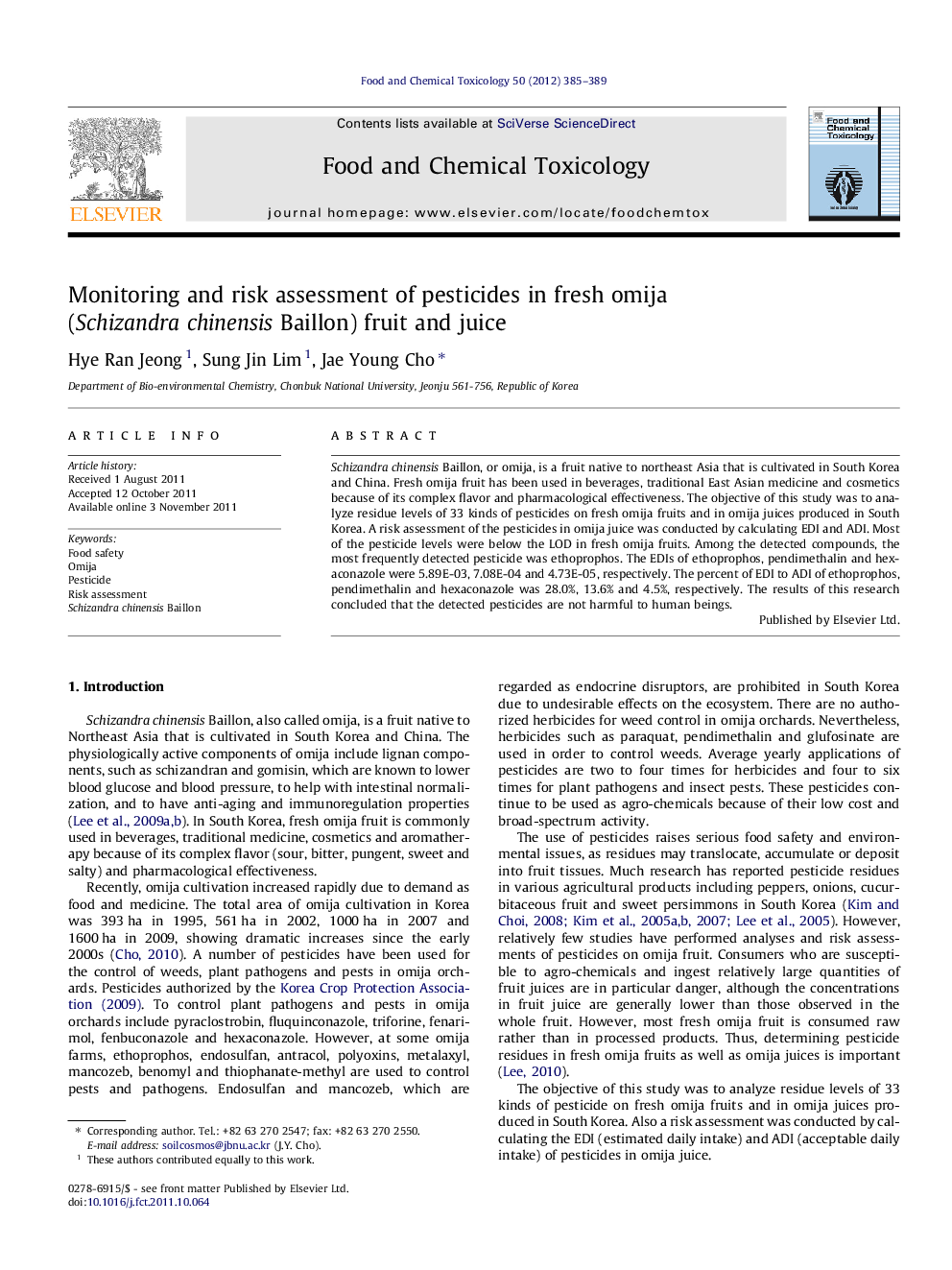| Article ID | Journal | Published Year | Pages | File Type |
|---|---|---|---|---|
| 5853387 | Food and Chemical Toxicology | 2012 | 5 Pages |
Schizandra chinensis Baillon, or omija, is a fruit native to northeast Asia that is cultivated in South Korea and China. Fresh omija fruit has been used in beverages, traditional East Asian medicine and cosmetics because of its complex flavor and pharmacological effectiveness. The objective of this study was to analyze residue levels of 33 kinds of pesticides on fresh omija fruits and in omija juices produced in South Korea. A risk assessment of the pesticides in omija juice was conducted by calculating EDI and ADI. Most of the pesticide levels were below the LOD in fresh omija fruits. Among the detected compounds, the most frequently detected pesticide was ethoprophos. The EDIs of ethoprophos, pendimethalin and hexaconazole were 5.89E-03, 7.08E-04 and 4.73E-05, respectively. The percent of EDI to ADI of ethoprophos, pendimethalin and hexaconazole was 28.0%, 13.6% and 4.5%, respectively. The results of this research concluded that the detected pesticides are not harmful to human beings.
⺠Ethoprophos and pendimethalin were found in both fresh omija fruit and omija juice. ⺠Most of 33 pesticides in omija fruits and juices were detected less than the LOD. ⺠The detected pesticides are not harmful to human beings.
